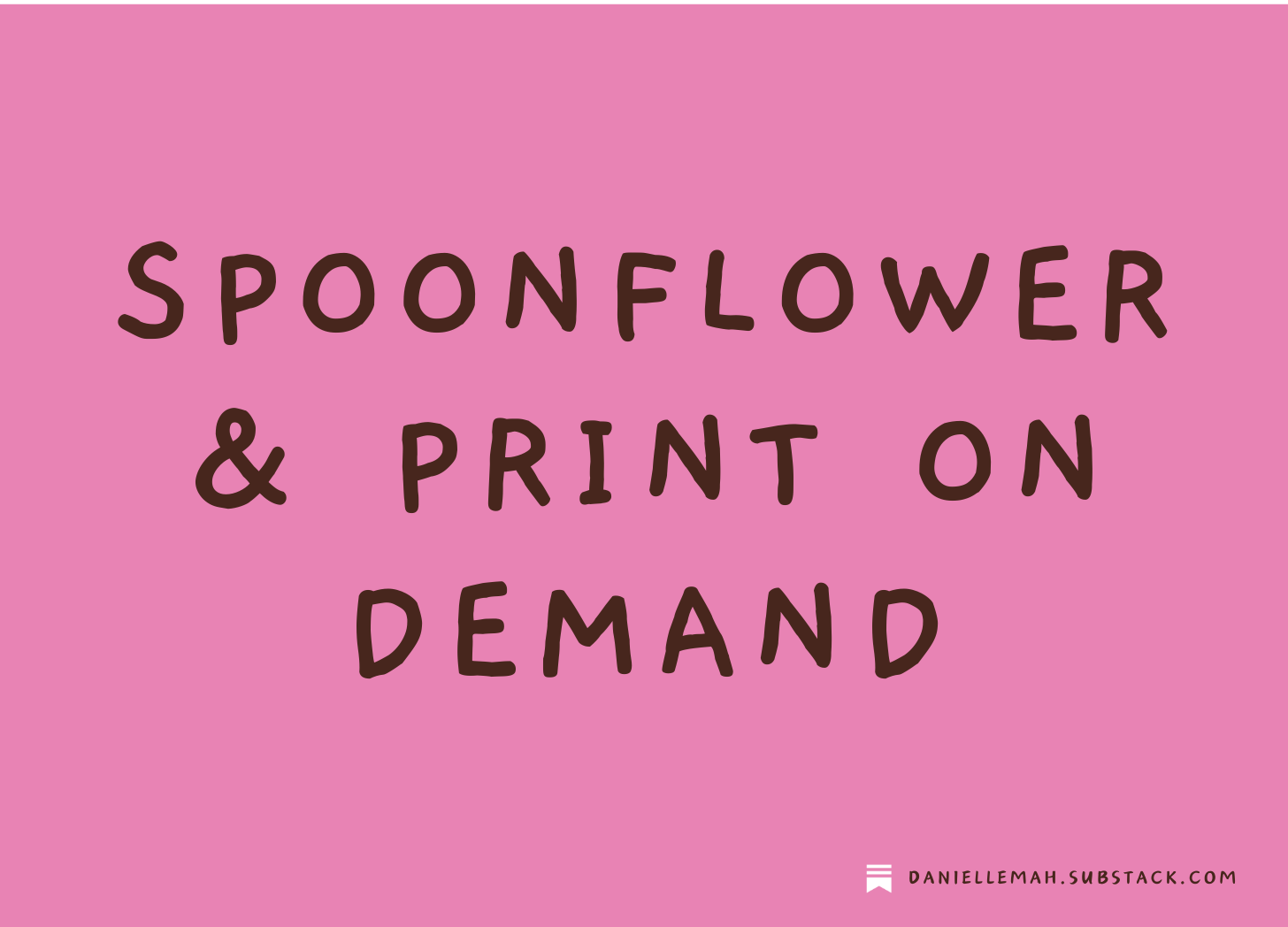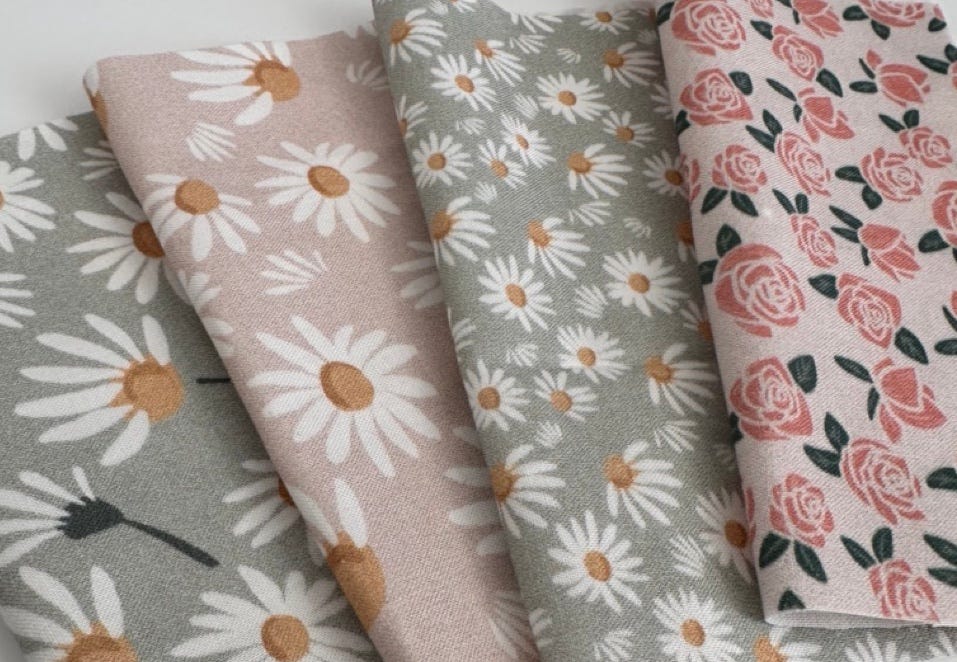My theory on getting Spoonflower sales and having success with passive income via Print On Demand
Is Spoonflower really worth your time and should you put your art on Print On Demand products?
I’m going to preface this by disclosing that I’ve been on Spoonflower for just over a year at the time of writing this and I’m not a top seller or have a shop with thousands of designs. However, I’ve had my share of sales and have seen some patterns in making sales that may help you to decide whether you want to jump on the print on demand side of making passive income.
Pssst. It’s not passive!
In late of 2022 I opened my Spoonflower shop and up until summer of 2023 I was actively participating in monthly challenges, liking people’s designs, and uploading my designs more regularly. I would get sales here and there even though I only had about 40-50 designs in my shop, people still managed to find me! Every couple of weeks or every month I’d get a notification in my email “Great news, you’re a success!” with either a fat quarter or yard of fabric sold, but towards the end of this year my sales have dwindled to only every month, then months, and eventually a long dry spell until recently. So what’s changed?
Some designers speculated that the new Spoonflower facility was one of the reasons and others have talked about how the marketplace was now crowded with a bunch of a.i. art and everyone’s designs were getting lost in the mix. I don’t know if those things played a role but if you think about it, it’s like saying how Instagram is more crowded now and our posts no longer get as much reach as they did before, which is valid, but it’s not the only thing we should focus on. To be fair, I had only recently entered one challenge in November, was not actively uploading designs, and was barely on Spoonflower itself which leads me into:
Clue #1. Activity on a POD platform matters and gets your designs seen. I don’t just speak for Spoonflower but also other POD sites like Redbubble as I was more active on that last year too. I had sales coming in when I uploaded new designs which also brought more interaction from other shop owners. I sold blankets, stickers, cell phone cases, etc on Redbubble and there were definitely designs that got purchased more than others. So while we may feel like we’re chasing an algorithm on social platforms, print on demand sites have an algorithm of their own too!
Clue #2. POD platforms give you indications of your best sellers so you can make more of that kind of design. If you don’t know what sells, POD can give you insights. On RedBubble there were certain designs of mine that frequently sold and there were some that never sold even once. I even had a customer tell me that they’ve been looking for one of my designs on a blanket and how happy she was to find mine which leads into the importance of having good SEO.
Clue #3. SEO is going to get you found and you can’t not work on your SEO. The customer who found my design on a blanket? I’m pretty sure if I didn’t tag my item correctly my product wouldn’t show up on her results page. While it may seem like all you do is upload a design and call it a day, in order to get found you need to put in a bit of SEO work. You need to add tags to your products that are relevant to what your customers are searching for. Don’t just tag “cats” but include specificity like “siamese cats”. If you were in your customer’s shoes, what type of words and themes would they search for? What designs would they want to buy?
Clue #4. You need to do the selling too. As someone just starting out, you won’t get as much traffic as a shop that’s been around for years and has built up a customer base plus ranked with their SEO. Last year I’d share my POD products and Spoonflower shop in my Instagram feed and had gotten sales from people who already followed me. It might feel salesy to ask for a sale but letting people know you have something for sale is not pushy nor is it telling people they have to buy it. But most of us are too shy or fear the rejection of putting ourselves out there. Even if someone you know buys your stuff, you’re building that confidence muscle so don’t hold back on sharing on social media.
Recently I got a Spoonflower sale literally after participating in one design challenge and uploading new designs last month. I don’t think that’s a coincidence and likely algorithm related. I sold two yards of fabric and made $3.80. All to say that passive income with print on demand is not exactly passive but feels more like low upkeep but the keyword is upkeep.
While I wouldn’t write off POD as one of my income sources, I know if I want to make it my main source or maximize my results, I’ll need to be intentional about how I use Spoonflower and POD platforms and give it time to grow into the revenue generating machine that some of the top sellers are able to reap from. Is POD currently a viable business model for you? And if you haven’t tried it yet would you?




Years ago I excitedly loaded many designs to Society 6. Their products were good quality and I have a few. In 5 years made two sales and a total of £1:30. Society 6 gave their sellers around 10% commission. However what I did not realise is that they rarely sold anything at full price because they were always having promotions for between 20 and 60% off. Traditional POD is not for me because I don’t have a sizeable audience and I find social media an unrewarding grind.
Thanks for giving your opinion!
thanks for this. As I ponder income streams for my post ‘day job’ world and the opportunity that may exist to turn my side hustle into a viable business one thing that does occur is POD. I’m not sure about fabric or things like Spoonflower but I really appreciate your honesty here. It all helps build a picture. And I think for me it does make it clear that POD is basically just about not holding and investing in stock, but you still have to do the selling.